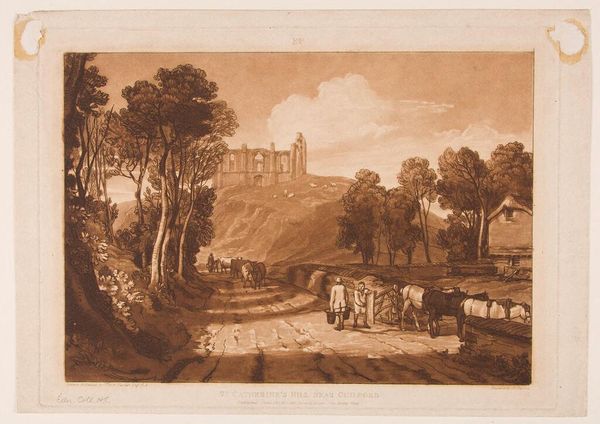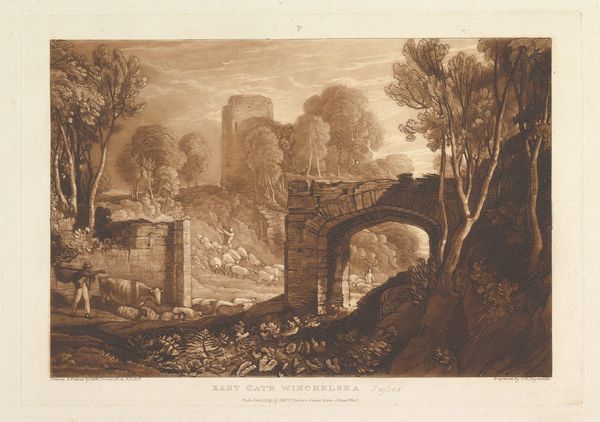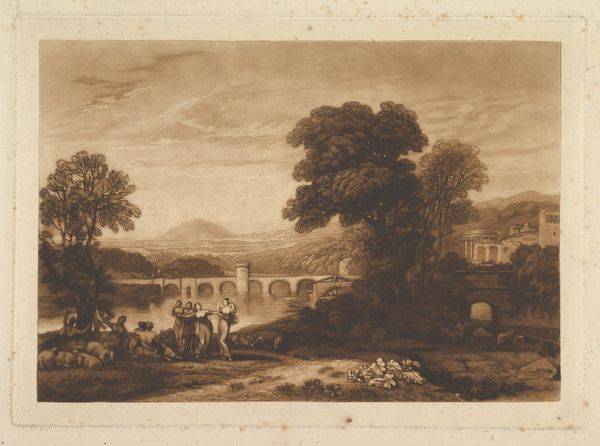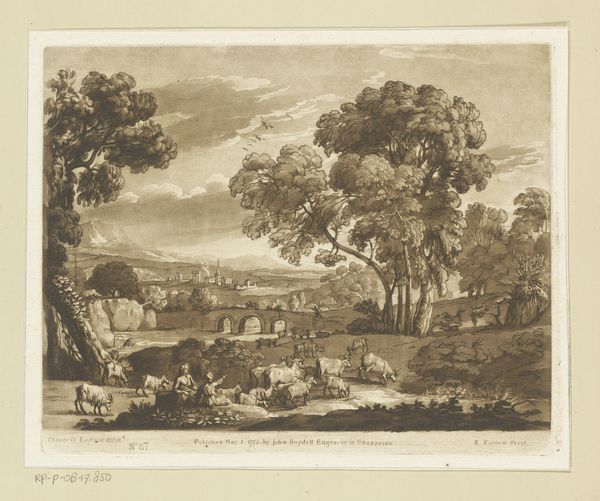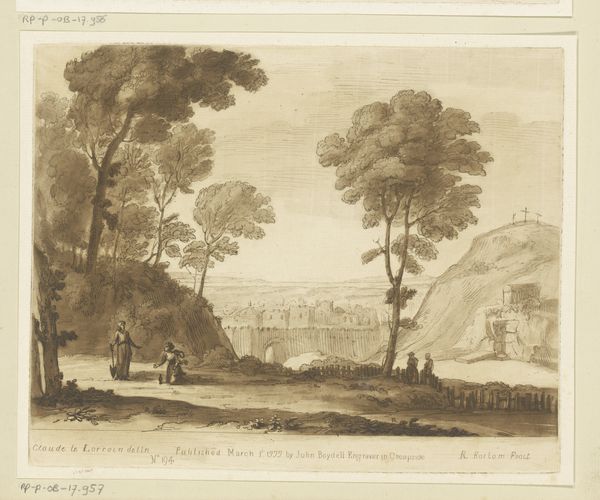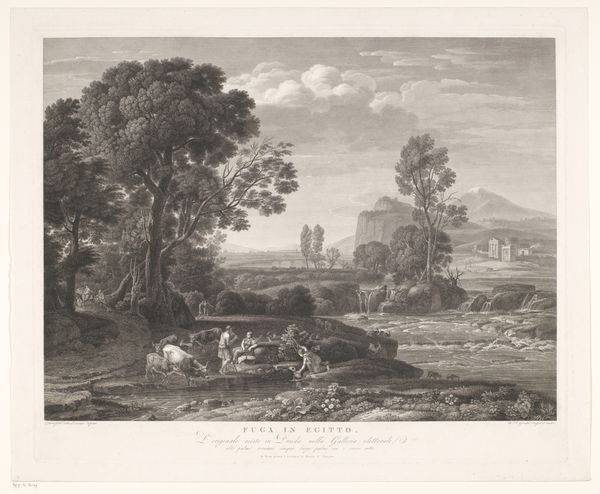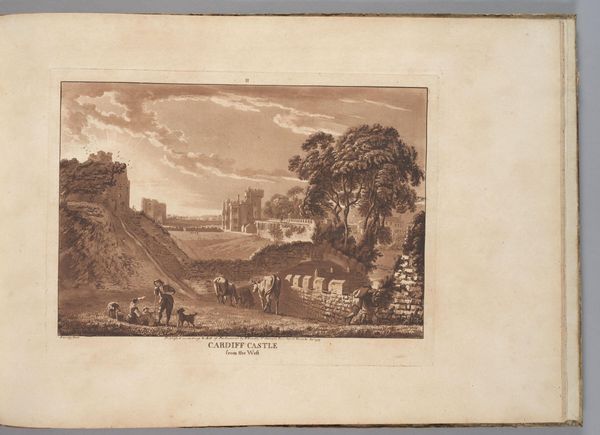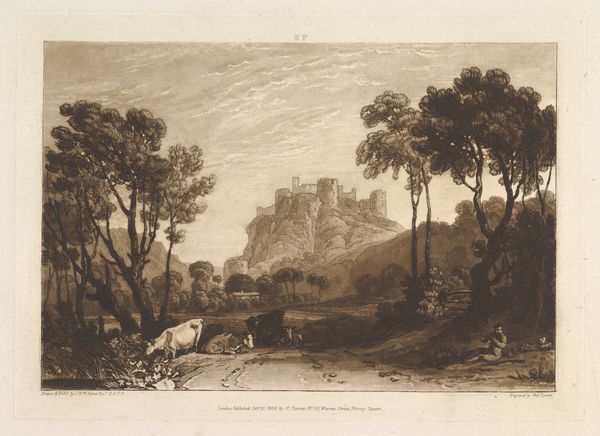
St. Catharine's Hill near Guilford (Liber Studiorum, part VII) 1811
0:00
0:00
drawing, print, etching, engraving
#
drawing
# print
#
etching
#
landscape
#
romanticism
#
engraving
Dimensions: plate: 7 5/16 x 10 3/8 in. (18.6 x 26.4 cm) sheet: 8 5/16 x 11 7/16 in. (21.1 x 29.1 cm)
Copyright: Public Domain
Curator: Let’s explore this print from 1811, Joseph Mallord William Turner’s "St. Catharine's Hill near Guilford," part of his *Liber Studiorum*. He employs etching and engraving here. Editor: It has such a subdued tone; all the monochromatic brown hues create a wistful, pastoral mood. The architecture, crumbling in the distance, seems heavy with unspoken histories. Curator: Indeed. Turner was deeply invested in the picturesque, aiming to elevate landscape art to the level of history painting. We see his engagement with representing English heritage. Consider also the role of land ownership, class dynamics represented through the figures traversing this pastoral scene. Editor: Right, the crumbling facade becomes a poignant metaphor for decaying social orders and class structures in transition. Note the road cutting across the frame; a route not just for commerce, but also exploitation and unequal power dynamics. The human figures and animals in the foreground offer commentary on society’s dependence on the land. Curator: Certainly, this is a moment of great industrial and agricultural shift, which dramatically changed the land and consequently society’s interaction with it. The image allows us to investigate the romanticization of landscape juxtaposed with its harsh social reality. It urges us to ask: who has access to beauty and serenity, and at what cost? Editor: Yes, seeing this etching within its social context casts Turner's sublime rendering as an acute historical reflection rather than mere bucolic idealization. Its somber palette conveys not only visual texture but also underlying political tensions concerning class and land. Curator: Looking back, the *Liber Studiorum* served as Turner’s powerful manifesto advocating landscape’s place in public discourse and as historical record. Editor: Indeed. It's fascinating to realize that it is not only a picture of a specific place, but a poignant, enduring reflection on societal transitions.
Comments
No comments
Be the first to comment and join the conversation on the ultimate creative platform.
